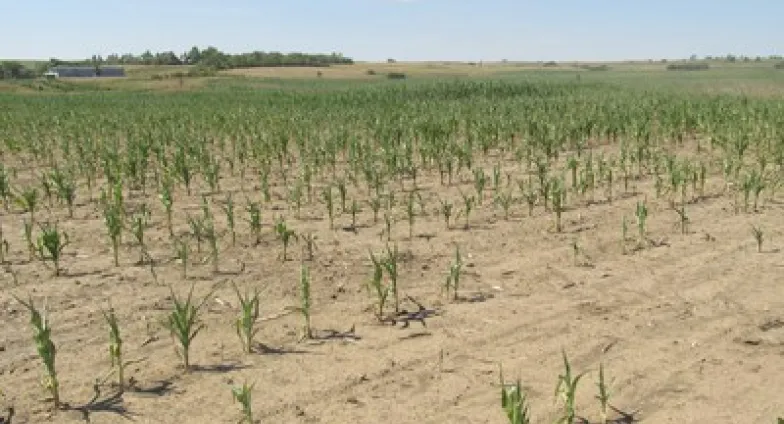Grazing and Feeding Restrictions for Herbicides
Consider past herbicide use when using small grains as an alternative for feed.
July 2017
Richard Zollinger, Weed Specialist
Hot, dry conditions may lead to a shortage of grass and hay for livestock. Small grain crops are an alternative source of feed for livestock when other feed sources are limited, but previous herbicide usage may influence using small grain crops as livestock feed.
Most herbicides have grazing and feeding restrictions stated on the label that limit the use of the crop for livestock feed. However, the labels are often vague regarding specific information on use of grain crops as forage for livestock, since this is not the normal use.
Grazing and harvesting a crop for feed following herbicide use often is prohibited because research on residue levels in the crop is inadequate. The effect of the chemical or its breakdown products on livestock or retention in the animal's body may not be known. Livestock which consume crops treated with such herbicides probably would not become ill from the chemicals, but could retain the chemicals in their systems. The concern is that herbicides could be passed in the milk of lactating animals or cause abortion in pregnant animals. The chemical may also have potential to be retained by the animals and be present in the slaughtered carcass. Although these problems are not likely to occur, labeling restrictions are strict and should be adhered to. The presence of foreign chemicals in milk or meat of animals can result in confiscation and destruction of the products and loss of income from these animals.
The herbicide label is always the final authority on herbicide uses and precautions. Information on the toxic effects of herbicides on animals is not readily available. However, the North Dakota Weed Control Guide contains grazing and feeding restrictions for herbicides commonly used on small grain crops.
